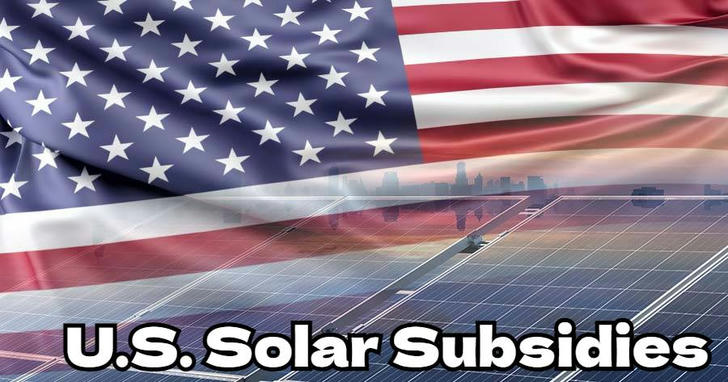Understanding U.S. Solar Subsidies: Opportunities, Eligibility, and Benefits
With rising electricity costs and growing concerns about climate change, solar subsidies are a crucial tool for helping homeowners and communities invest in clean energy and reducing financial barriers. Americans now have access to a range of government-backed solar programs, making this transition both affordable and practical.

Key U.S. Solar Subsidy Programs
Several federal and state-level initiatives are available to support households and businesses in making the switch to solar:
Solar for All Program – Launched under the Inflation Reduction Act, this program provides $7 billion in funding to expand solar access across the country, particularly targeting disadvantaged communities. It supports both community solar projects and rooftop systems, making clean energy more accessible nationwide.
U.S. Department of Energy (DOE) Solar Access Program – This initiative focuses on equitable access to solar technology, ensuring low-income households, renters, and underserved communities can benefit from lower energy bills. It often works through partnerships with state agencies and utilities.
Federal Solar Investment Tax Credit (ITC) – Perhaps the most well-known subsidy, the ITC allows homeowners and businesses to deduct 30% of the cost of installing a solar system from their federal taxes. This credit is locked in through 2032, creating long-term financial certainty for those planning solar investments.
State-Level Rebates and Incentives – In addition to federal programs, many states such as California, New York, and Massachusetts provide their own rebates, net metering schemes, or performance-based incentives that further reduce upfront costs.
Who Benefits from These Solar Subsidy Programs?
Low-Income Households – Programs like Solar for All and DOE’s Solar Access prioritize households struggling with high utility bills. These subsidies ensure that solar adoption does not remain exclusive to wealthier communities.
Renters and Multifamily Properties – Community solar programs allow renters and apartment residents to subscribe to shared solar farms and still benefit from lower energy bills.
Rural Communities – Certain subsidies and USDA energy programs help rural households and farmers adopt renewable energy, often reducing dependence on unreliable or costly grids.
General Homeowners and Businesses – Through the ITC, any household or commercial property owner can significantly cut the cost of a solar installation. Businesses may also receive accelerated depreciation benefits, further improving cost savings.
How to Access Solar Subsidies?
Applying for solar subsidies in the U.S. is a straightforward process, but it requires careful planning:
Check Eligibility – Review federal, state, and local programs to confirm whether you qualify. Low-income households, renters, and homeowners may have different options.
Apply for the Federal ITC – This is claimed through your federal tax return (IRS Form 5695) after installing your solar system.
Look into State Rebates – Each state has its own application portal. For example, California’s Self-Generation Incentive Program (SGIP) or New York’s NY-Sun initiative.
Consider Community Solar – If you cannot install panels, contact local utilities or nonprofit organizations to enroll in community solar projects.
Keep Documentation – Maintain invoices, contracts, and proof of installation to secure all available benefits.
Common Questions About U.S. Solar Subsidies
Q1: Can renters qualify for solar subsidies?
Yes. Renters can participate in community solar projects, where you subscribe to energy generated by a shared solar farm. Your utility bill is then credited, lowering monthly costs.
Q2: How much can I save with the Federal Investment Tax Credit?
The ITC covers 30% of the total system cost, including equipment, labor, and permitting fees. For example, on a $20,000 solar installation, you can deduct $6,000 from your federal taxes.
Q3: Do I need to be low-income to qualify for solar subsidies?
Not necessarily. While some programs like DOE Solar Access focus on low-income households, the Federal ITC and most state-level incentives are open to all income levels.
Q4: Are businesses eligible too?
Yes. Businesses benefit from the ITC as well as depreciation deductions, making solar a financially attractive investment in the long term.
